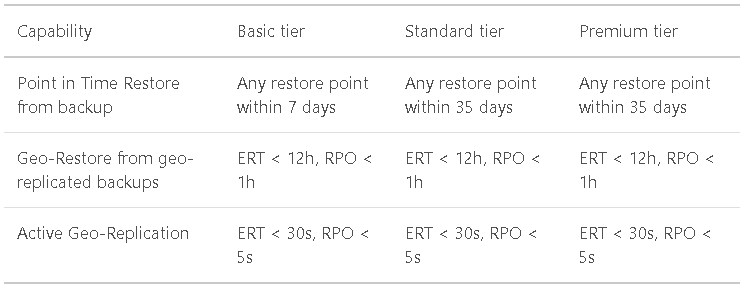Active Geo Replication Introduction
Active Geo Replication is very similar to AlwaysOn and just like AlwaysON feature you can configure up to 4 readable secondary databases in the same or different regions. All your secondary databases are always available for read only workload.
On 25th April 2016 Active Geo replication was made available to all service tiers, means you don’t have to be in premium tiers in order to take its advantage. The regular (standard) Geo Replication where secondary databases were non-readable will retire in April 2017 and if you won’t upgrade yourself all your standard Geo Replicated databases will be automatically upgraded to readable active geo replicated databases.
You can configure Active Geo Replication using Azure Portal, T-SQL, PowerShell or using REST APIs.
How Active Geo Replication works?
Active geo replication is a feature to provide redundant readable secondary databases within the same or different regions. This works in Asynchronous manner, means once configured it replicates all your committed transactions asynchronously from primary to all available secondary databases. This copies only committed transactions to secondary databases, this makes sure your secondary database will never have any uncommitted transactions (partial transactions). Since the replication mechanism is asynchronous in nature there is always a possibility that your secondary databases will be a little behind primary database. You might be worried about the recovery time & RPO of these databases, here is a small image which shows the Estimated Recovery Time (ERT) & Recovery Point Objective (RPO). The basic tier provides ERT of less than 30sec and RPO less than 5sec which is amazing. Don’t forget all we pay around 5$/month for a basic tier database & get all this amazing ERT & RPO.

Is there any possibility of Data Loss?
Yes, don’t forget active geo replication is asynchronous which means if the primary database goes down or we encounter any unplanned failover there is always a possibility of data loss, having said that the data loss won’t be too much. Not to mention in addition to data loss (if any) clients must reconnect to the application & all active connections will disconnect in the event of a failover.
In what all cases we should consider using Active geo replication?
Use Active Geo-Replication if your application meets any of these criteria:
- Is mission critical?
- Has a service level agreement (SLA) that does not allow for 24 hours or more of downtime.
- Downtime will result in financial liability.
- Has a high rate of data change is high and losing an hour of data is not acceptable.
- The additional cost of active geo-replication is lower than the potential financial liability and associated loss of business.
Hope you got answer to your questions! Happy Learning!
feel free to leave a comment. 🙂
Thanks,
Sarabpreet Singh Anand
Subscribe now to get latest Tips\blog posts in your Inbox
Follow @SQLChamp
Follow @Sarab_SQLGeek